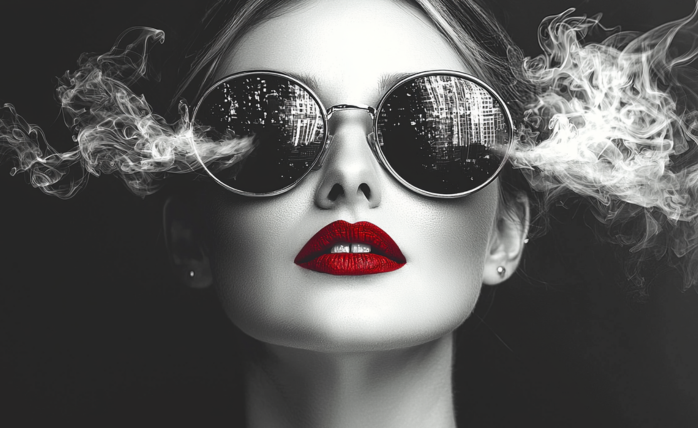Life
How Mindfulness Helped Me Drop Bad Habits

Almost everyone will admit they have areas or habits in their lives they feel can be better than they are at the moment. Some people may feel they can be more kind and compassionate, others feel they can be more assertive, and others feel they can be more peaceful and happy.
For me, a few years ago, I felt I could be less angry and explosive. I was short-tempered and would often result in very cruel words which I didn’t think through well or just simply be violent. And this was not something I enjoyed at all.
I tried a couple of anger management techniques to see if they could help but they were barely helpful. When I almost gave up on this character improvement project, it’s when I discovered mindfulness and went on to work with it to overcome this problem.
A Clear Breakdown of How I Used Mindfulness to Conquer Anger
Step 1. Research about mindfulness and get to know it
Although I had a rough idea of awareness, I decided to do deep research on it so that I would have concrete detailed information on the practice. I used reliable sources of information online for learning about mindfulness which are credible and authoritative in the self-improvement industry.
I also read books, visited self-help websites, watched videos, and listened to podcasts on mindfulness.
Step 2. Figure out an approach plan and where to start
After my research, I tried to figure out how I could apply it practically in my life. I had learned that mindfulness meditation was a form of training in mindfulness so I only found it natural to begin mindfulness by training myself through meditation.
My approach plan was to start with the meditation practice and later on try out other mindfulness techniques to increase my moments of mindfulness and increase its effects in my life.
Step 3. Get started with mindfulness meditation immediately
After having a vision and a plan of how to approach things, I made the effort of beginning the meditation practice right away. I used guided meditation resources for mindfulness meditation to help me learn how to do the meditation practice and also have a feel of what mindfulness is like. I began meditating for 5 minutes and slowly increased the duration as I got comfortable. This is an important step because most people don’t take it. They never get started at all.
Step 4. Aim to get better with every meditation session
After a couple of meditation sessions, I noticed that, since I was still a beginner, I was making a lot of mistakes which included feeling weighed down by the practice and feeling like it was too much work to do, just to name a few. So I researched more about the problems from people who have experienced the same in the past, found effective solutions for them, and began applying them as I aimed to make some improvements in every session. Online meditation communities and forums helped me find the solutions to my meditation problems.
Step 5. Reflect and visualize about solving the problem you have
My goal was to control my anger to the point where it couldn’t affect me even when I was told anything that might trigger negative reactions. I desired to be told something that felt insulting and not even flinch. So I would reflect every so often on how I wanted my life to be. I would think about the specific problems that are brought by the anger and I would try to look for solutions. And then I would visualize myself applying those solutions in the needed areas. I would consciously tell my mind that the visualized solution is exactly how I’m going to be doing things in my life going forward. Doing that helped me remember to be aware of myself when such times came and made applying the solutions much easier since I had already established in my mind, through visualization, exactly how I wanted things to be.
Step 6. Put in personal effort consistently to apply the solution
Now applying the solution every time isn’t easy. The first few times might be a bit easy but making them stick and become your second nature is quite hard. What I found to help with the issue of consistency and habit creation is that you have to view the solution like a new habit you’re going to form that’s going to stick with you forever.
So when you apply it the first few times successfully, you should still remind yourself that it’s what you’re going to do again when you’re in the same situation in the near future. I reminded myself and followed it up with physical effort. If I came across anything I knew might make me angry, I would try to be aware of myself and my emotions and then remind myself what I decided to be doing, and then I would act upon it immediately. Sometimes, I would choose to walk away, and other times I would keep quiet and discipline myself to not speak at all.
Step 7. Aim to be aware of yourself
Based on my personal experiences, I have learned that being always aware of yourself, not just when you want to solve a problem in your life, but every other moment really helps. Awareness helps you not get into that problem in the first place so that you avoid having to solve it after it has already affected your life.
However, being always aware is pretty hard and needs a lot of work. I achieved it by doing mindfulness meditation daily for 10 to 20 minutes to start with.
I also worked with mindful listening and speaking when I was having conversations with other people, mindful working when working, mindful walking when commuting to work or generally any time I was walking, mindful eating during my meal times, and mindful showering when taking a bath. Ideally, taking any chance you get to be aware and fully maximize it.
However, before I got to use these other mindfulness techniques, I only worked with mindfulness meditation and visualization to be aware of myself when trouble came and then used the other mindfulness techniques to be always aware of myself.
Moreover, I’d take my time in the evenings to review how my day was and how I did with regard to calming down my anger. And I’d visualize how I would approach the next day when I had the same anger problems. I’d take different versions of scenarios that would get me angry and see myself handling them much better without being lost in emotions. Doing this helped me remember automatically how to behave when I got into such situations.
To achieve all that I was dedicated, committed, disciplined, and focused on making a permanent change. Eventually, it worked!
Life
Imposter Syndrome Is Rooted in Your Past But Here’s How You Can Rewire It
Imposter syndrome is most prevalent in highly successful women

Imposter syndrome is “the persistent inability to believe that one’s success is deserved or has been legitimately achieved as a result of one’s own efforts or skills.” (more…)
Life
The Surprising Mental Health Tool You Probably Haven’t Tried
Through journaling, I arrived at a more balanced perspective, it reinstated my sense of gratitude and led me to accept my disability

In two particularly difficult times in my adult life, my journaling practice is helping me heal emotionally. It has been a vital tool for helping me see the bigger picture and land in a place of gratitude. (more…)
Life
How to Stop Comparing Yourself to Others and Find True Happiness
Comparison is the thief of joy; it robs us of our happiness, self-esteem, and peace of mind

In today’s hyperconnected world, it’s easier than ever to fall into the trap of comparing ourselves to others. Social media platforms like Instagram, Facebook, and LinkedIn constantly bombard us with curated highlights of other people’s lives, making it seem like everyone else is happier, more successful, and more fulfilled than we are. (more…)
Life
Harness the ‘Battery Effect’ to Transform Life’s Tensions into Your Greatest Strength
Recharge your life batteries by shifting your mindset today

I believe our life capacity is determined by the skillsets we develop on this spinning rock we call Earth. By “life capacity,” I mean our ability to embrace and sustain joy. (more…)
-

 Success Advice4 weeks ago
Success Advice4 weeks agoThe One Mindset Shift That Made Me Irreplaceable At Work
-

 Scale Your Business4 weeks ago
Scale Your Business4 weeks agoWhy Smart Entrepreneurs Never Skip This One Business Expense
-

 Did You Know3 weeks ago
Did You Know3 weeks ago7 Surprising Life Lessons Video Games Taught Me That School Never Did
-

 Success Advice3 weeks ago
Success Advice3 weeks agoHow Playing by the Rules Became the Smartest Business Strategy
-

 Success Advice3 weeks ago
Success Advice3 weeks agoHow to Build Trust, Kill Micromanagement, and Lead a Team That Thrives
-

 Scale Your Business2 weeks ago
Scale Your Business2 weeks agoHow to Build a Workplace People Actually Want to Show Up To
-

 Success Advice2 weeks ago
Success Advice2 weeks agoSuccess Isn’t Sexy: 5 Daily Habits That Actually Work
-

 Scale Your Business2 weeks ago
Scale Your Business2 weeks agoHow Smart Entrepreneurs Cut Financial Chaos in Half with One Simple Switch





























